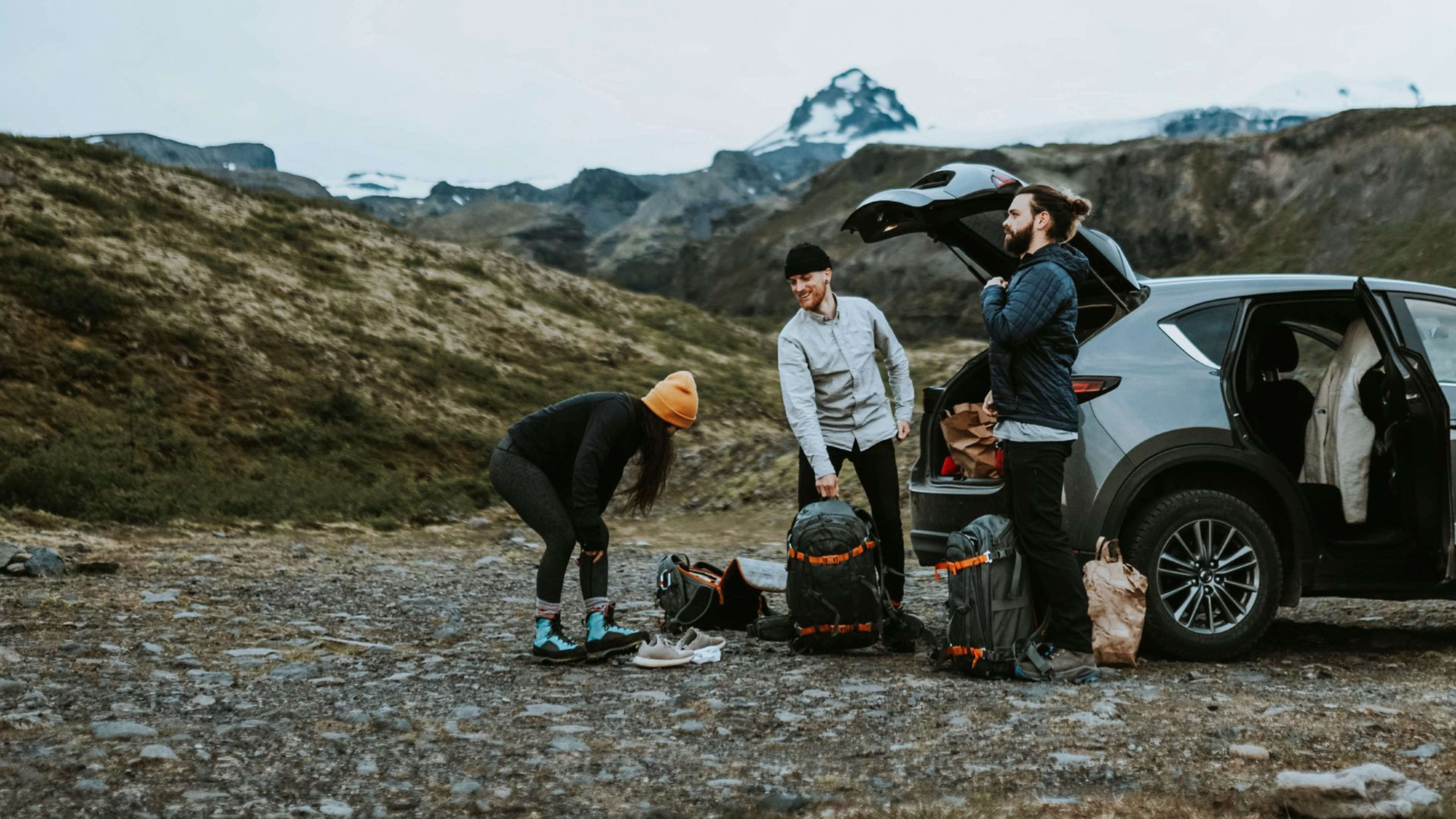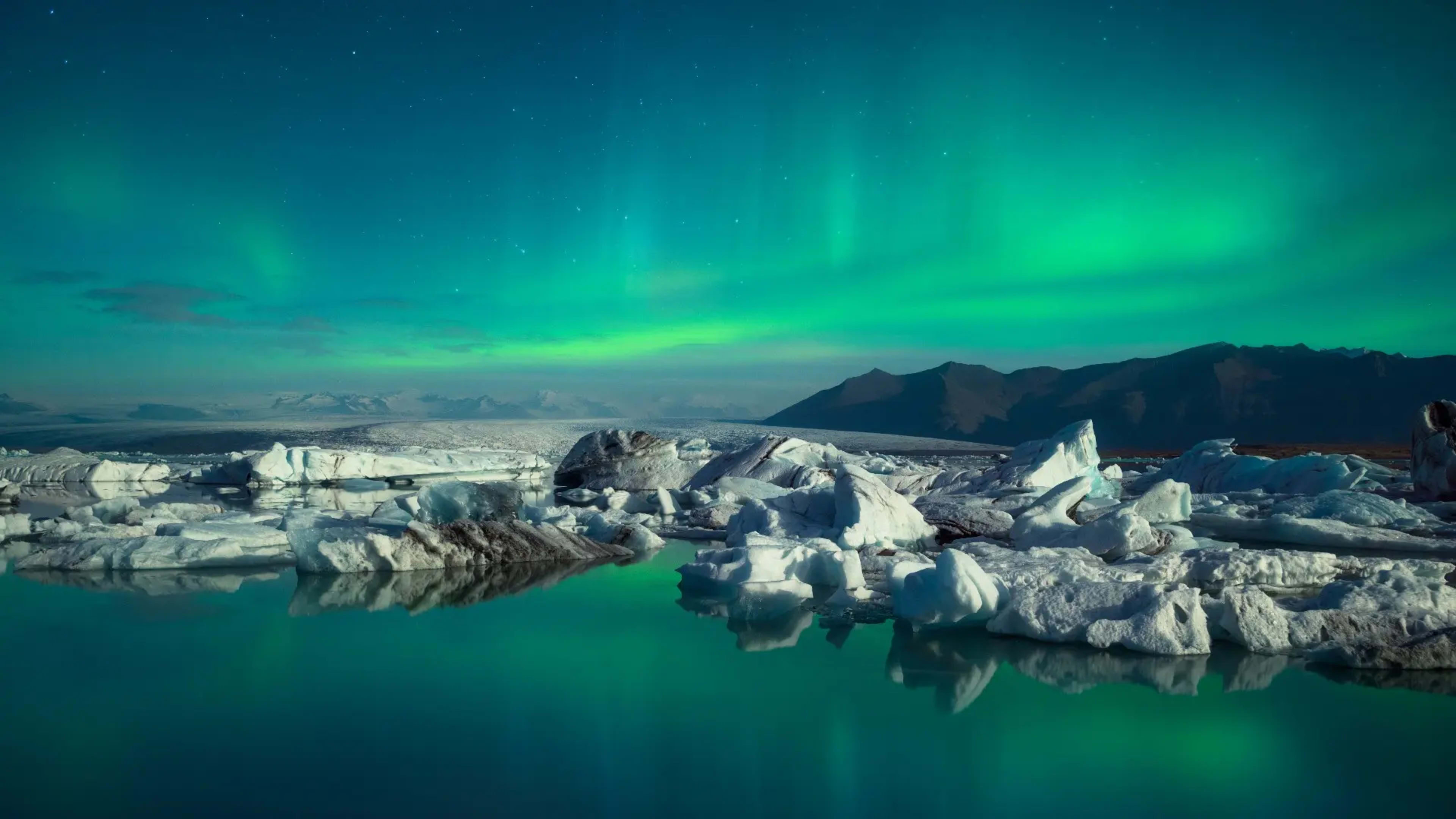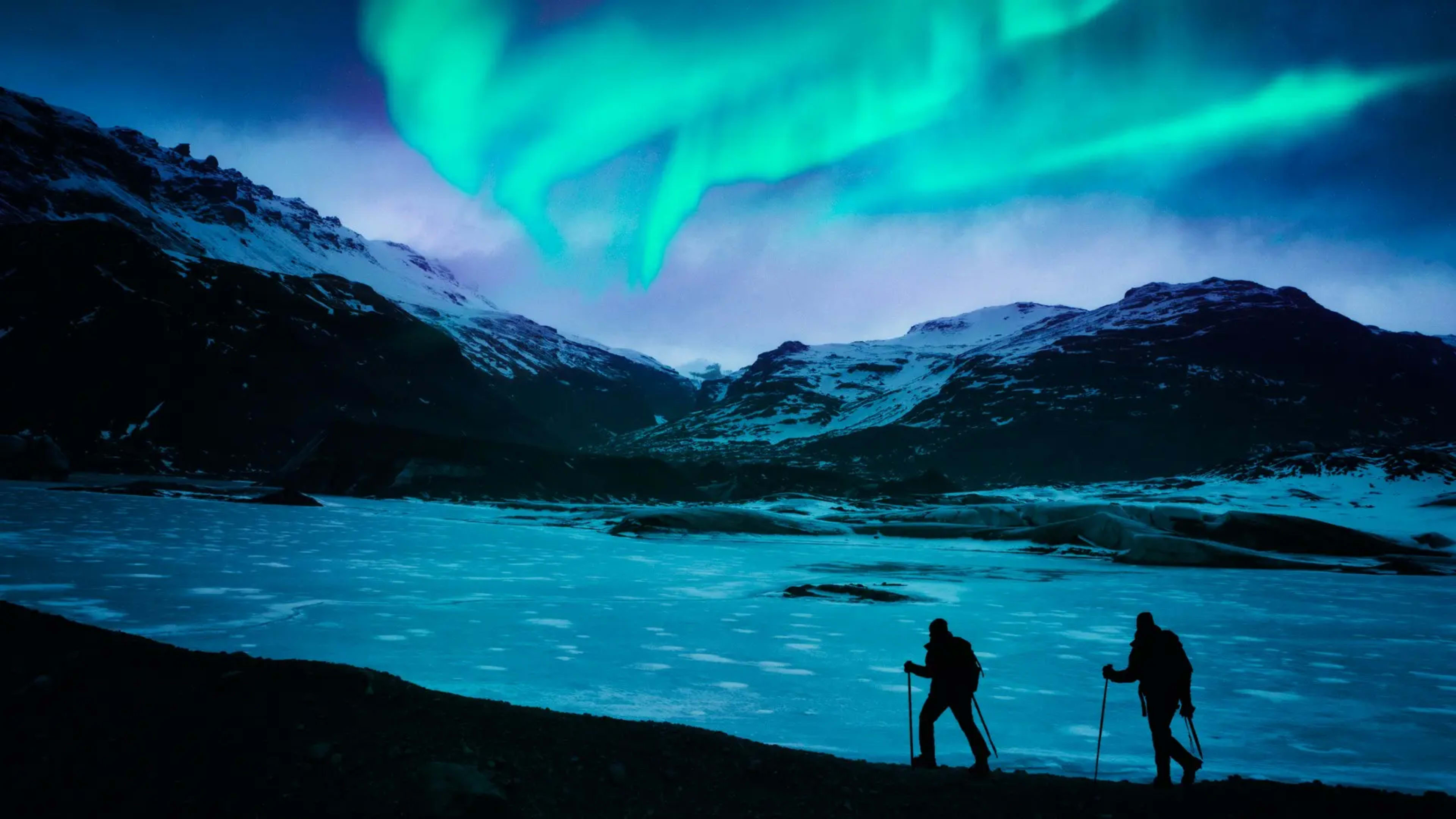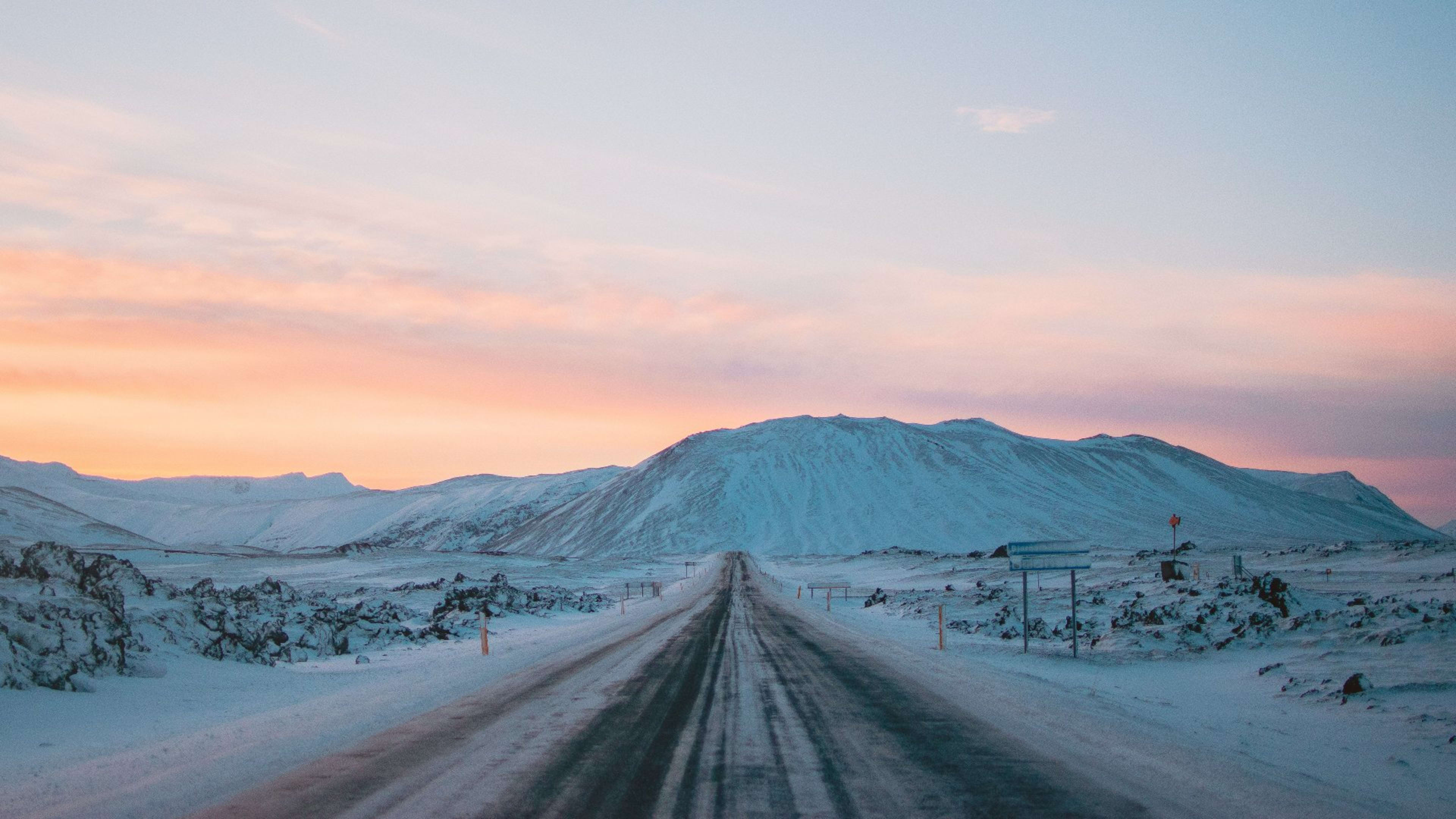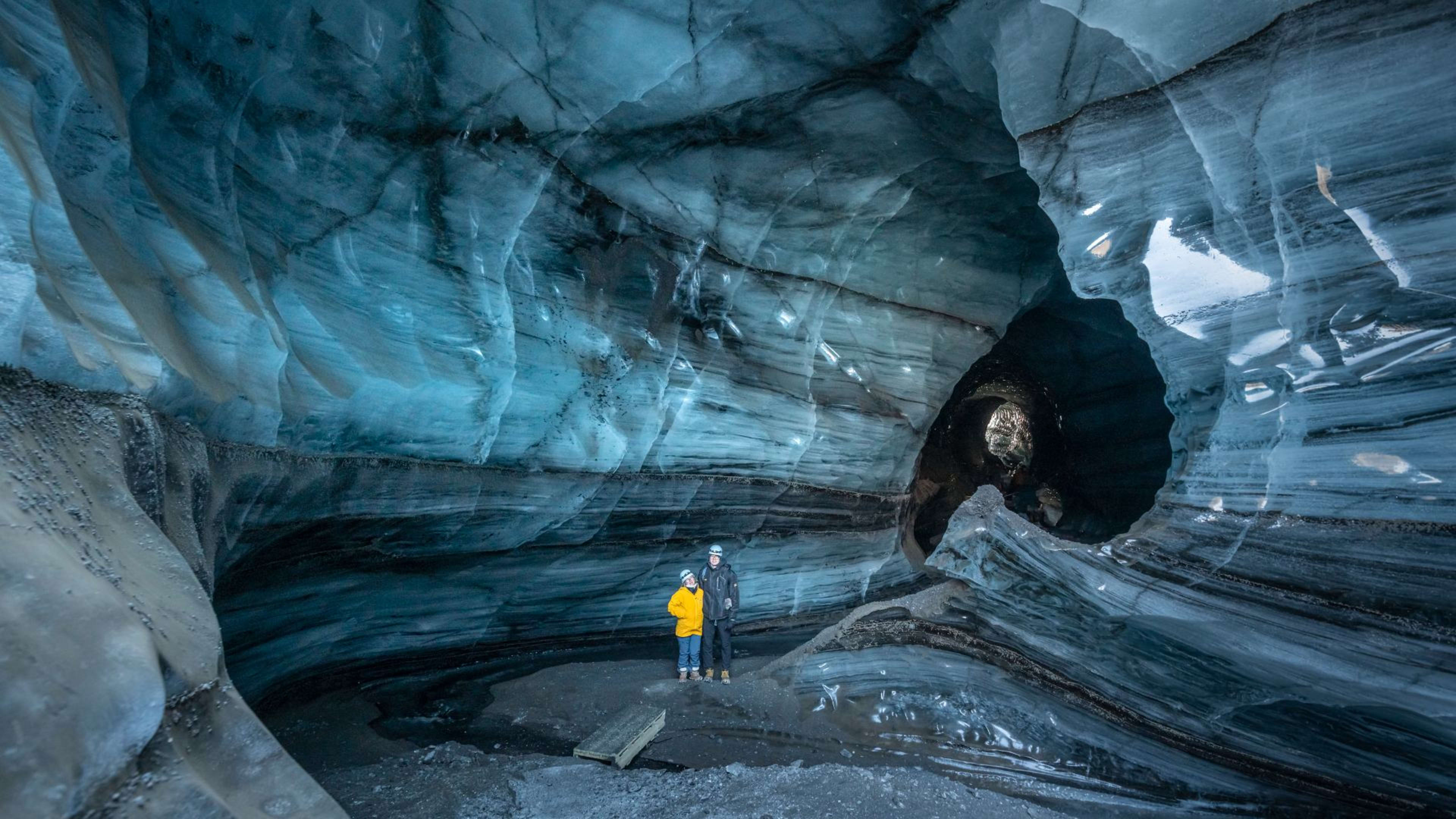Excited about your first winter trip to Iceland? The Land of Fire and Ice is truly magical at this time of year, with frosted waterfalls, fluffy Icelandic horses, Northern Lights galore, and unique excursions like ice caving. You won’t regret visiting Iceland in winter, that’s for sure!
So you’ve picked your itinerary and all the fun activities you’ll do during your Icelandic vacation. All that’s left for you to do is pack a suitcase and come enjoy it all IRL. But what should you pack and how well dressed should you be?
Read this complete guide to the infamous Iceland winter weather and how to pack for it.
- Browse Iceland winter vacation packages.
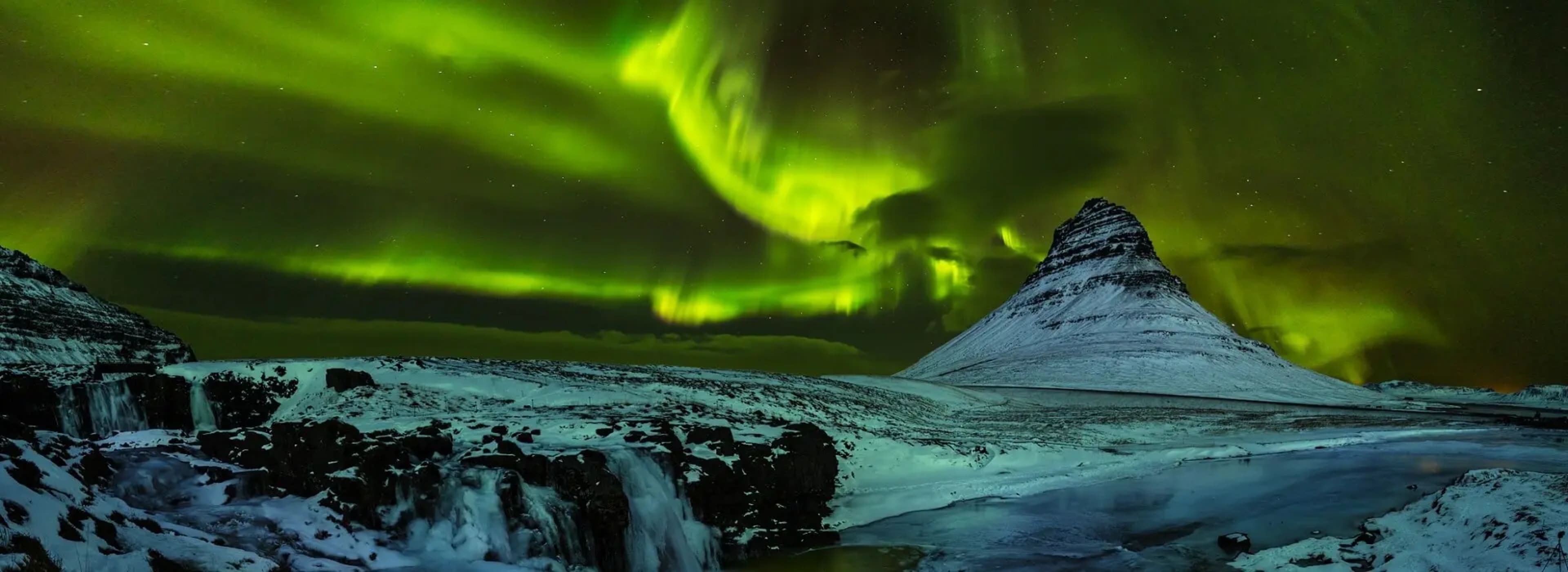
Your guide to Iceland’s winter weather
Let’s dive right into what you can expect of Iceland’s winter months. These are the cooler months of the year, but don’t let that scare you. Iceland isn’t as icy as the name may suggest.
Iceland winter temperatures by month
Which winter month are you planning to visit Iceland? Check the average temperatures and conditions for each month here:
October: Though Iceland records low temperatures and even snow as early as August or September, the winter weather really sets in from October. On average, you can expect temperatures around 6°C (42°F).
November: Degrees keep dropping and average temperatures are between 1°C (34°F) to 5°C (41°F) in November. This is often a rainy month with northerly winds. You’ll start seeing snow dusting mountain tops.
December: Marking the middle of the winter, this is when temperatures can start dropping below freezing. Expect highs of 4°C (39°F) and lows of -1°C (30°F). While it may snow, you can expect some rain and wind in the cities.
Local tip: Don’t forget about the short hours of daylight as Iceland celebrates the winter solstice in late December. You’ll want to take full advantage of the short days for excursions – and long nights to catch sight of the Northern Lights.
January: January is usually the coldest month with temperatures just below freezing. Expect average temperatures around -1°C (30°F) or -2°C (28°F). This means it’s a great time to come enjoy the magical snow-covered mountains and lava fields.
February: From this time of year, the weather may start to warm up slightly. We said slightly… Hovering just above freezing, you can expect snow or rain depending on the day’s temperatures.
March: Iceland’s winter weather usually continues through March, with snow, northern winds, and some rain. Around the country, the average temperature is 2°C (30°F).
April: As spring awakens, the temperatures and daylight start to brighten up Iceland. The average temperature in April is 5°C (41°F).

FAQs about the weather in Iceland
With general hints as to what temperatures you can expect, we’ve also answered some frequently asked questions about Icelandic weather here:
Does it snow in Iceland?
Yes! Snow can start falling as early as August or September in the cities and lie on top of mountains as late as June and July. In the depth of the Icelandic winter, the country is covered in a frosty blanket that will add to the cool factor of your photos.
How much snow does Reykjavík get?
While it snows in Reykjavík, it may not settle as much as in the countryside or mountains. Accumulation is usually around 2-5 centimeters (1-2 inches).
- Explore these multi-day tours from Reykjavík.
What is the average winter temperature in Reykjavík?
Reykjavík will have slightly warmer conditions than other parts of the country. It’s usually a few degrees warmer than in North Iceland or the mountains, for example. You can expect temperatures around 0-5°C (32-41°F) depending on when you visit.
How cold does it get in Iceland?
Despite all the averages we’ve given you, it’s good to remember that Iceland can get quite cold. This is especially true if you take into consideration the northerly wind that adds a chill factor.
And, just like it can experience a heatwave in summer, Iceland can also get cold snaps in winter. Temperatures could drop as low as -30°C (-22°F), but this is very rare. That said, it all leads to the next section – how well you should pack for your winter adventure to Iceland.
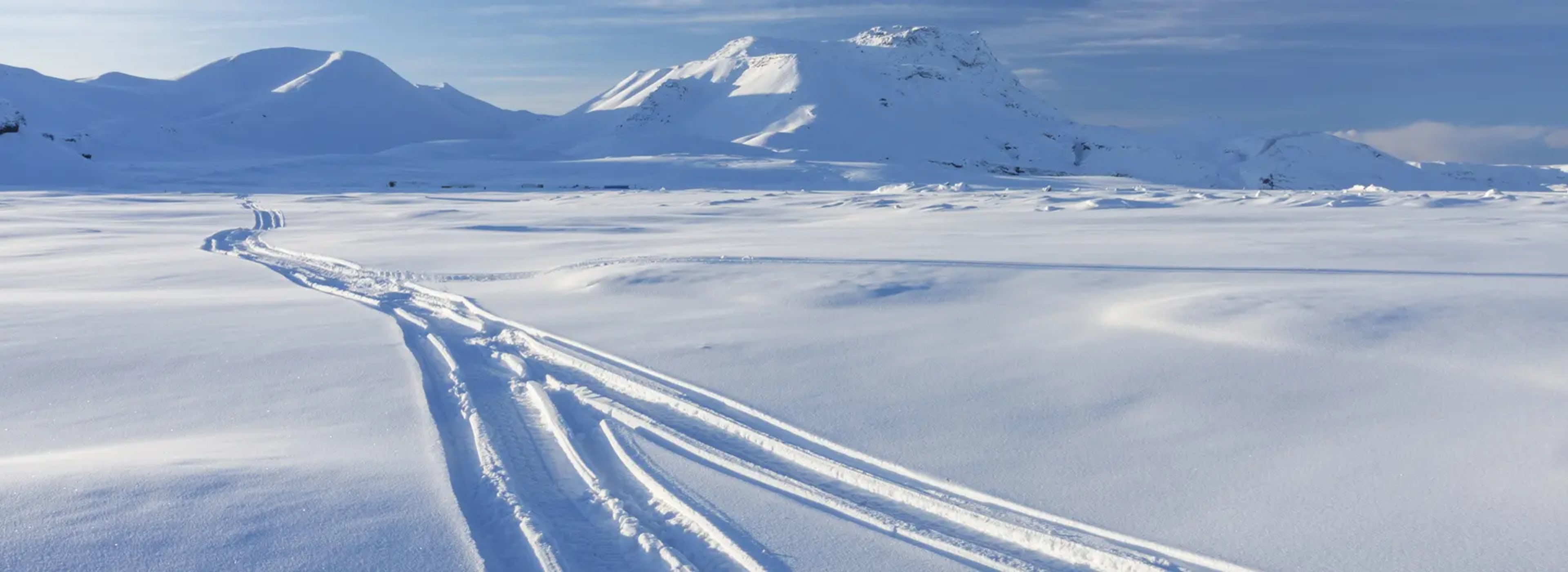
What to pack for Iceland in winter
Now that you know what to expect of the weather, it should be easier to know how to pack for it. But the way you pack and dress will depend on what you’re used to and where you’re flying from.
If you’re coming from a warmer climate, make sure to pack more warm layers. Visiting from a cooler country? You may already be dressed the part.
Here’s a winter packing list to visit Iceland:
- Lightweight wool or fleece sweater
- Insulated rainproof and windproof jacket
- Water-resistant trousers and maybe snow pants
- Thermal base layers, such as long underwear (long johns)
- Warm gloves, scarves, and hat
- Winter boots or waterproof hiking boots and wool socks
- Hand warmers
- Packing cubes to separate your items depending on the weather
No matter how long you’re staying, your trip to Iceland won’t be complete without a visit to a geothermal spa or one of the many local pools or hot springs. Make sure to pack your swimsuit, a quick-dry towel, and some flip-flops.
You’ll find that places like the Blue Lagoon rent out bathing suits, but you might prefer to bring your own.
Are you visiting on a road trip? Bring some car chargers for electronics so you can stay connected during your time in Iceland.
- Pick the road trip that suits you with these self-drive tours of Iceland.
- Prefer to skip the driving? Check out these guided group tours.
And don’t forget your camera!
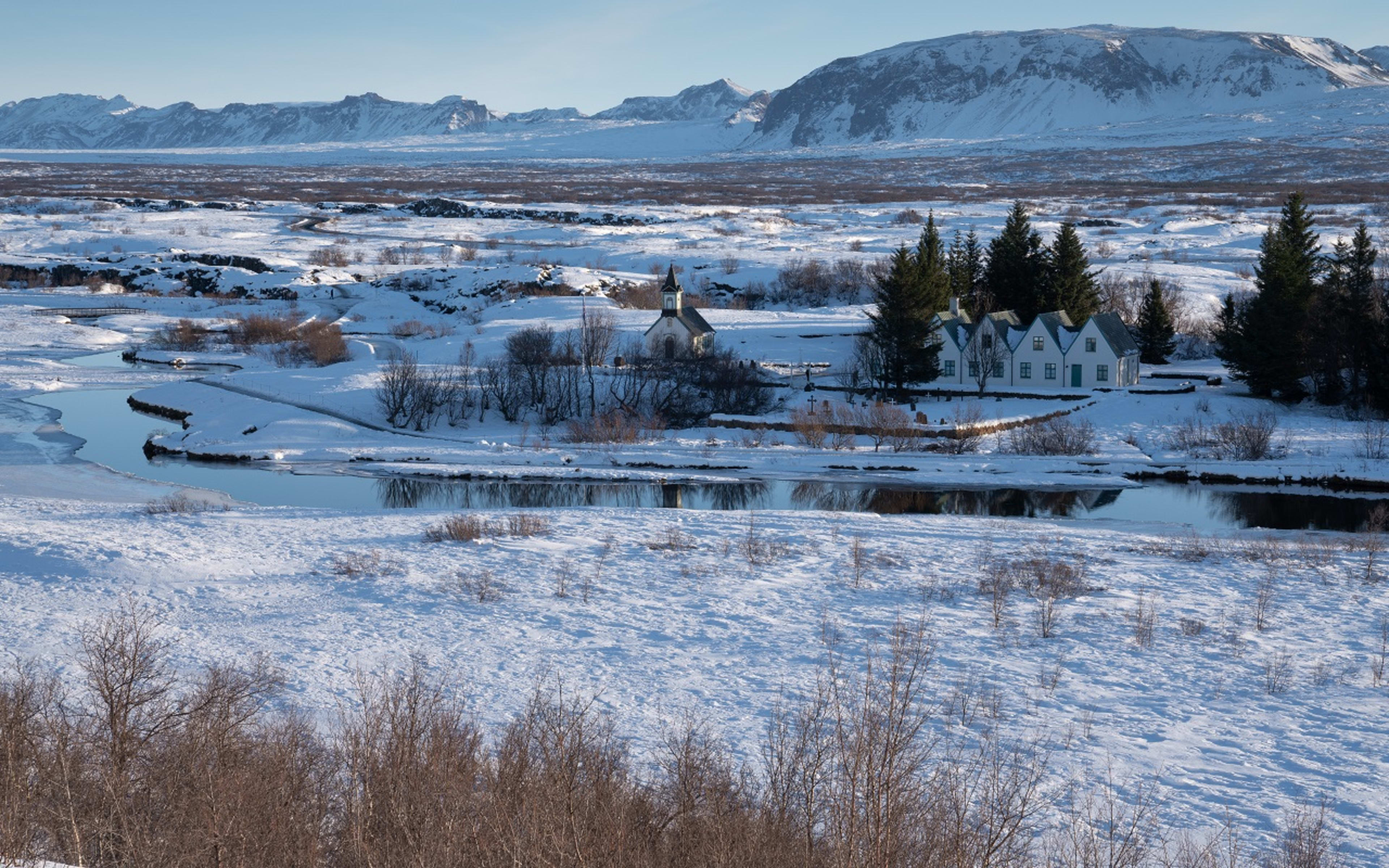
What clothes should I wear in Iceland in winter?
Our packing list above will give you a good indication of the kind of clothes you may need.
That said, if you’re just passing through Reykjavík, you may find that a pair of jeans and a warm coat will get you through your city break. But if you’re planning any excursions, it’s good to come prepared with everything from the above packing list.
Generally, we recommend you come pack several layers so you can adapt to the daily weather and activities. This way you won’t get too cold or too hot.
What pants should I wear in Iceland in winter?
Bring whatever pants or jeans you’re comfortable with. That said, especially if you intend to go on excursions and walks, you’ll want to also have thermal leggings as a base layer.
You may also want to bring a pair of snow pants or at least a waterproof layer to put on top of your normal clothes. They’ll add a layer of protection if you come upon cooler, wetter, and snowier days.
Some excursions provide gear and layers to wear on top of your clothes. But for extra warmth make sure to dress as well as you can.
What shoes should I wear in Iceland in winter?
For a trip to Iceland in winter, you’ll want to wear boots or at least insulated and waterproof hiking shoes. Your best bet is to have insulated, winter boots to keep warm as well as dry.
Good sturdy boots will be your friends for all kinds of Icelandic terrains. This includes strolls along black sand beaches or short hikes to waterfalls or glacier lagoons.
Excursions like ice cave tours will give you the added gear such as crampons, so you don’t have to bring these with you.
- Roam around ice caves and lava caves on an Iceland adventure tour.
- Related: 17 Best day hikes in Iceland.
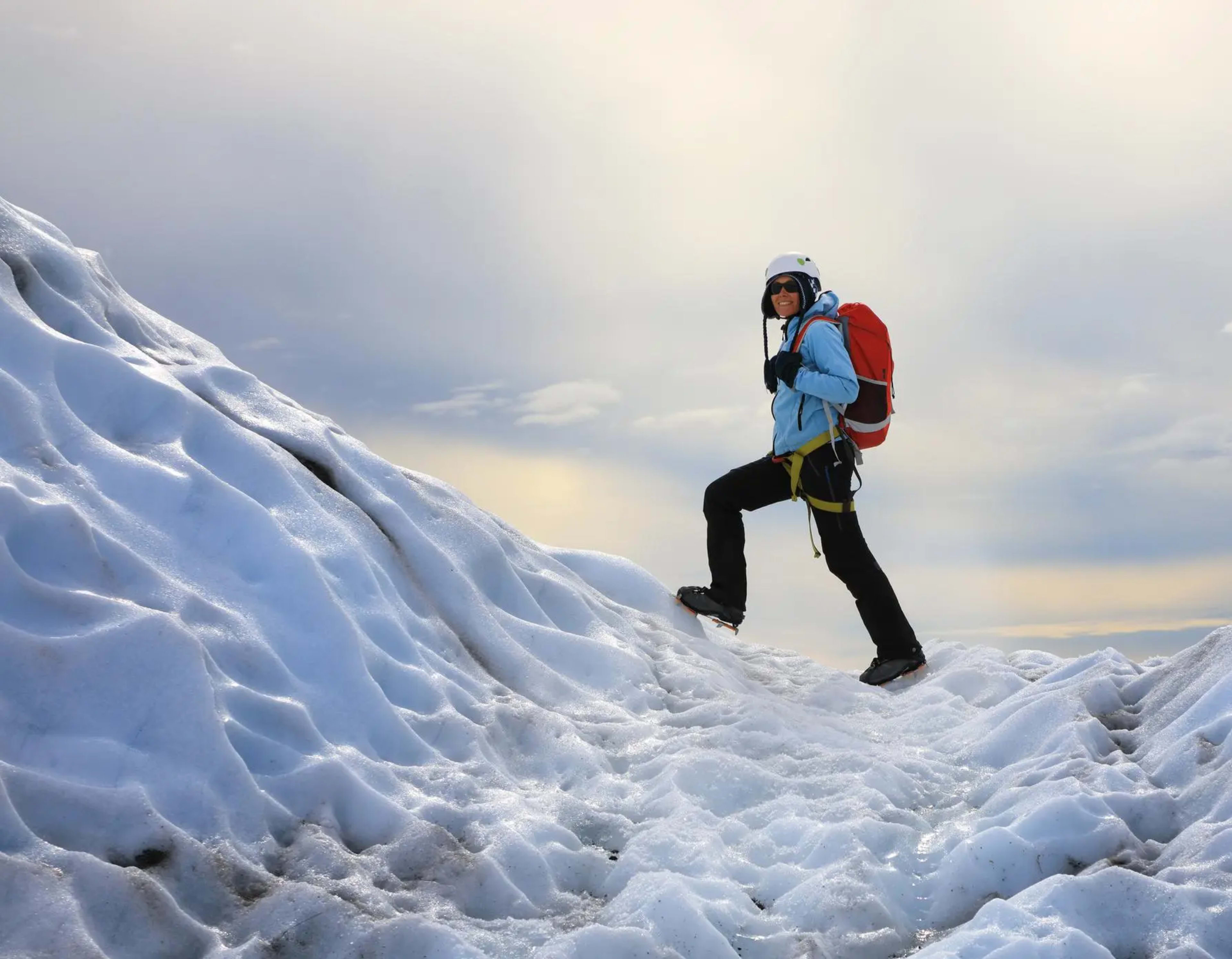
What coat should I wear in Iceland in winter?
The best things to look for in a winter jacket for Iceland are as follows:
- Insulation – basically a warm layer inside the protective shell jacket.
- Water-resistant – this way it won’t soak up the snow or rain.
- A good hood – for an added head protection and layer of warmth.
- Plenty of pockets – this is a bonus so you always have extra gloves, hand warmers, and local snacks on you.
What should I wear to go hunting for the Northern Lights?
When you’re out on a Northern Lights tour or “hunting” by yourself at night, you may find that you get colder than during the day. Looking out for the Aurora Borealis often means being out late at night, in colder temperatures, and also keeping still, awaiting their magical arrival.
The best tip you can follow is to dress as warmly as you can, from head to toe. Set up your tripod and then stay warm with a hot beverage. You may want to bring extra gloves or heat packs to keep those fingers warm and ready to capture the light show.
- Browse these Northern Lights tours of Iceland.
- Related: Best places to see the Northern Lights in Iceland.
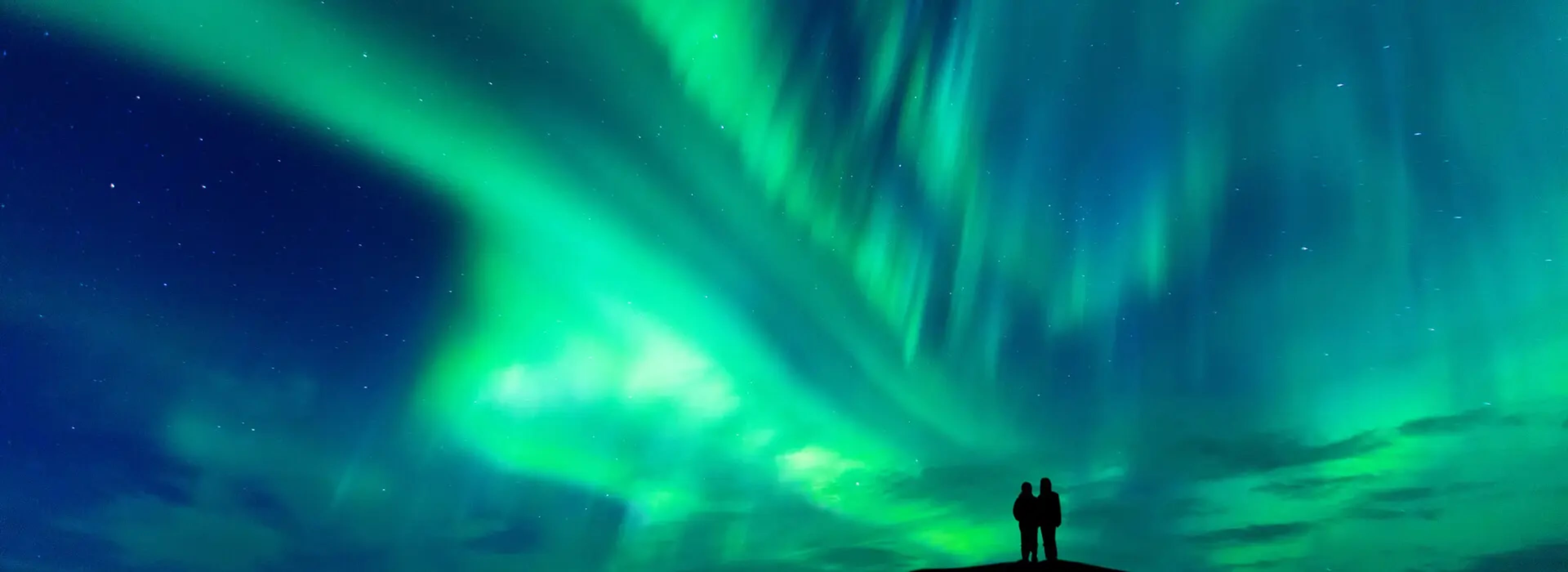
What do Icelanders wear in winter?
Icelanders are born and bred in this weather and always come prepared. Have you heard of the saying: “There’s no such thing as bad weather, just bad clothing”? This rings true here! You don’t want the chilly wind or snowfall to dampen your days of magnificent sightseeing and thrilling activities.
If you want to do as the locals do, you could always pop into a Reykjavík shop to pick up an additional layer that’s made in and for Iceland. You could also purchase a traditional Iceland wool sweater, called a lopapeysa. These will make a warm layer and unique souvenir to take home!
- Set the pace on your own winter self-drive tour in Iceland.
- Want more top tips for Iceland in winter? Read our guide to the top things to do and see in Iceland in winter.
Hopefully this article helped you get ready to pack that suitcase of yours. We’re sure you’ll have an amazing time traveling to Iceland in winter as it is so rewarding. Remember to focus on staying warm and dry, and enjoying yourself.
If you want to start planning your next trip, browse our winter packages to Iceland. It’s easy to pick the itinerary you prefer, then tailor your tour with your car and accommodation preferences and any optional activities. Iceland awaits!

